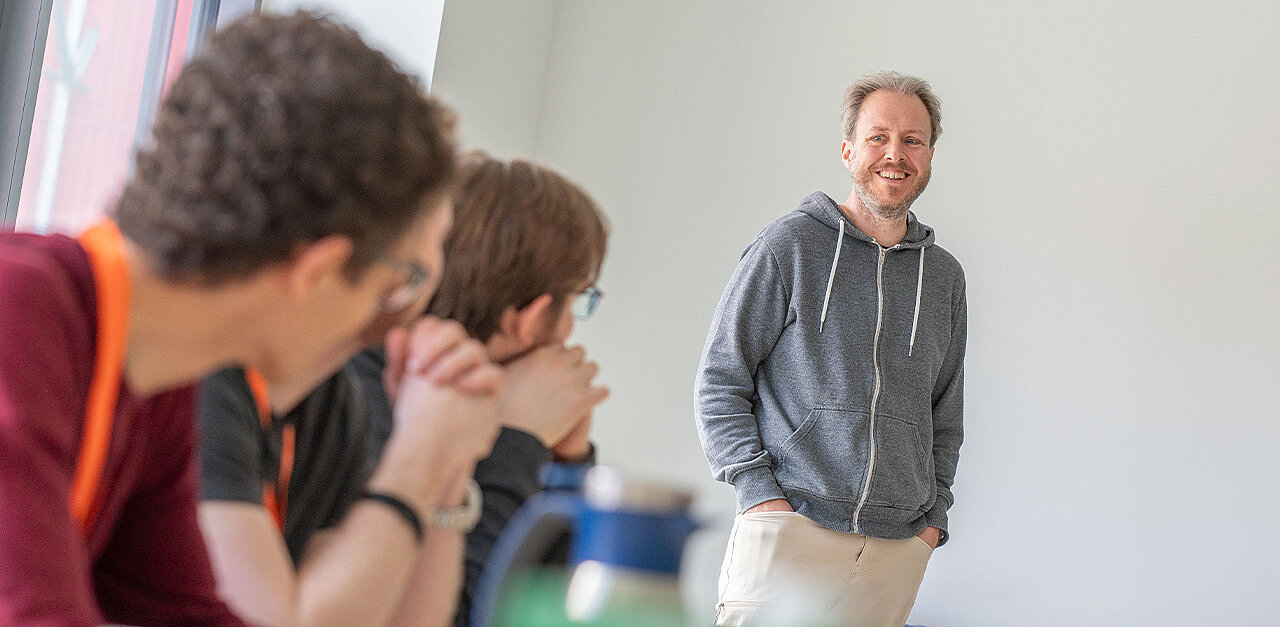Not all researchers choose to stay in academia – some transition into industry roles. Clemens Jakubeit, once a PhD student and postdoc in the attoworld-group, is one such example. He now works at Mynaric as an optical test engineer, focusing on laser communication. In the following interview, Clemens talks about his current role and the connections and differences between academic research and industry work.
What is laser communication?
Laser communication is the idea to replace RF communications – so, the radio waves in conventional communication – with laser beams. The benefit of that is that the bandwidth that’s available when using laser light is significantly higher than with RF communication due to the type of a focused beam, or rather a collimated beam. It’s also more secure because it's spatially very limited.
And what’s the role of Mynaric within this field?
The mission of Mynaric is to make laser communication a scalable, meaning we want to mass produce terminals to get the produced numbers up. And with that, drop the price of the individual terminals to make it available to a big number of partners in the industry.
What does your job at the company involve?
My job is in the testing department. I started as a normal optical test engineer. As that I was basically following up with what I did at MPQ: I developed an optical testbed to ensure that our terminals are working as they are intended. But now I switched to a senior position and am more in an oversight role. I'm still close to the colleagues in the lab, but I’m mostly working at the computer, looking at data, doing simulations, and doing analysis of what we’re doing.
Is there any overlap with your research work during your PhD or postdoc?
The lab work is very similar in the end: The alignment of systems, the basic concepts are the same. You need these in the position that I joined Mynaric with, just the same as you need it during a PhD or a postdoc. The structures are different. You’re maybe not as free in what the direction of your work is, but still, you have more a general goal. And then how to get there is at your own discretion.
What are the main differences?
The main difference for me is that you are more specialized. We are at the verge of a startup. So, you’re still able to do quite a lot. You are still able to do, for example, your lab work, your data analysis and your software development. Which might not be possible, for example, if you go to big companies like Siemens, BMW or whatever. But still, you do have the professionals and the specialists of different professions. You do have your professional software developers. You do have your mechanical engineers, your electronics engineers. So, you really have the specialists to do these tasks if necessary.
How does your background in attosecond physics help with your job?
Coming from attosecond physics, the level of precision is quite similar. And I was used to using quite complex schemes and setups to measure things. And that’s the same here.
What kind of challenges do you encounter in your daily work?
It’s very similar to what you have in science. You are measuring things. You develop a concept how to measure things, but you need to make sure that you are actually measuring what you want to do and that you’re not measuring something else and then have a wrong result. That’s the day-to-day challenges. And that’s also what I am currently doing in that senior role that I’m reviewing what we are doing on other testbeds.
What kind of optical components are you working with?
Well, with the terminals themselves: These are in the essence mirror telescopes with some steering mirrors. In the lab, we have big astronomical telescopes that we use as collimators. And otherwise it’s a normal lab infrastructure. From the laser side, we are using fiber amplifiers at 1.5 micron. That’s mostly it.
How do you think the field of laser communication will evolve?
We're still at the very beginning. It’s a new technology that’s currently evolving and where we are still figuring out how it really works. There are still quite a few steps that need to be taken to really make it a broadly available product. At the moment, we're at the very start of that. We are at the spearhead of that, but I think it will evolve. It has so many benefits that it will spread quite big. And I think that’s going to be a huge market.
Are you still in contact with the attoworld team?
I am currently not in touch. My former colleague Matt Weidman joined me, so we are in touch here, if you like, but not strictly with the people from attoworld. But that’s just evolved to like that, it’s not a choice. I would like to have a visit at some point.
Thanks for the interview!
Clemens Jakubeit is not only a former attoworld colleague, but he is also an alumnus of the IMPRS-APS. You can watch a slightly different version of this interview as a video on the IMPRS-APS YouTube channel.
Interview: Nina Beier
Photo: Thorsten Naeser
